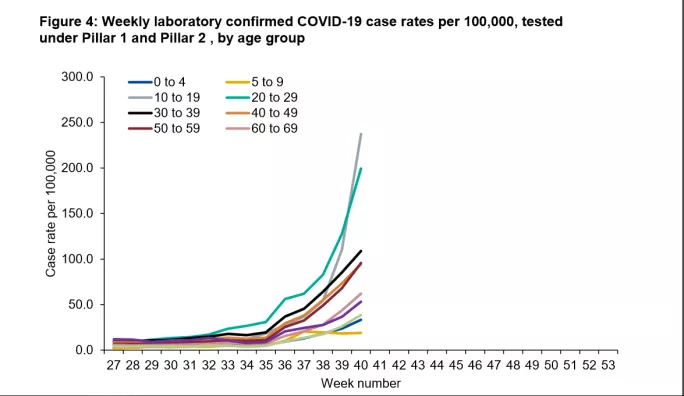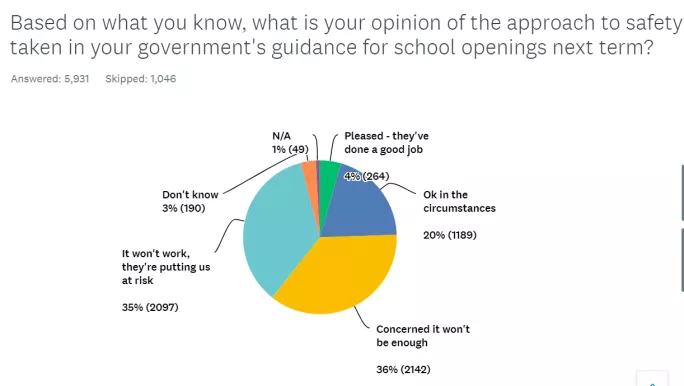Britain’s largest teaching union has called for action after the latest official data reveals “significant” increases in Covid-19 cases among pupils aged 10 and older, leaving them top of the infection table.
The figures from Public Health England show the infection rate among 10- to 19-year-olds has now overtaken the 20-to 29-year-old group and is growing faster than among other age groups in the population (see graph below).
The NEU teaching union is now calling on the government to make testing available “much more quickly”, and to guarantee funding for all school Covid costs. It is also calling on the government to invest in “Nightingale classes” and blended learning in order to reduce class sizes.
New data: Covid secondary school closures double in a single week
Coronavirus: Schools to move to rotas in high-risk areas
DfE: Government has not ruled out rotas for schools in local Covid-19 spikes
NEU joint general secretary Kevin Courtney said the increases were “significant”. He said: “These increases do mean the government has to act because vulnerable people who teach them [pupils] or who live with them can be at higher risk so the government has to do everything it can and everything it must to get cases falling again across our country.”
Statistics from the PHE report also shows that the rate of infection among 10- to 19-year-olds is around 500/100,000 in regions such as the North West, North East and Yorkshire and the Humber, where Covid cases are highest.
Mr Courtney added: “If it [the government] wants schools to remain open, it has to do all it can to aid them in keeping as Covid-secure as possible, including by making testing available much more quickly, by guaranteeing funding for all Covid costs and by investing in Nightingale classes and blended learning to reduce class sizes and transmission networks.”
He also highlighted statistics from the Office for National Statistics (ONS) which, he said, show that the infection rate among pupils in Years 7 to 11 is now “roughly speaking twice that of the general population (see graph below).
Meanwhile, the Public Health England figures also show that educational settings had the highest number of cases out of any institutional setting (with workplaces second).







